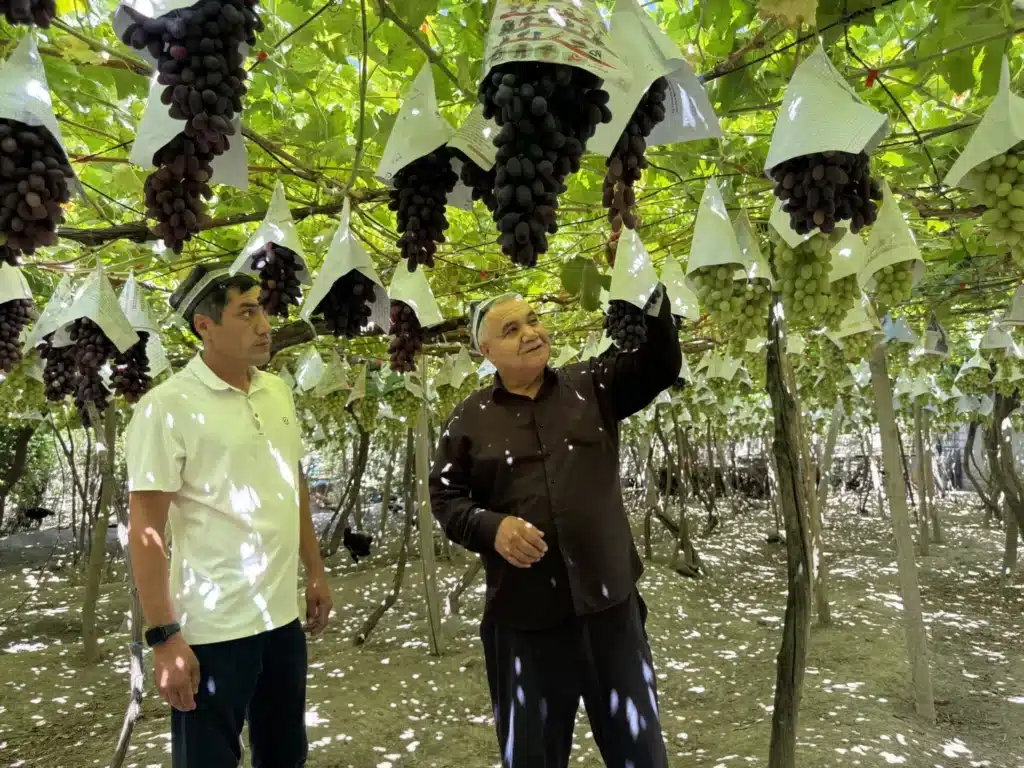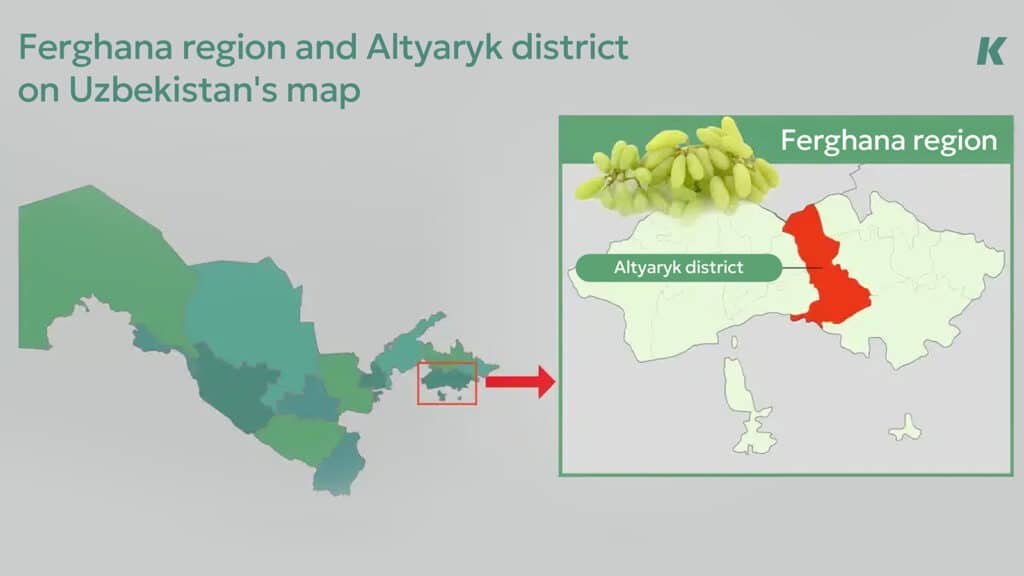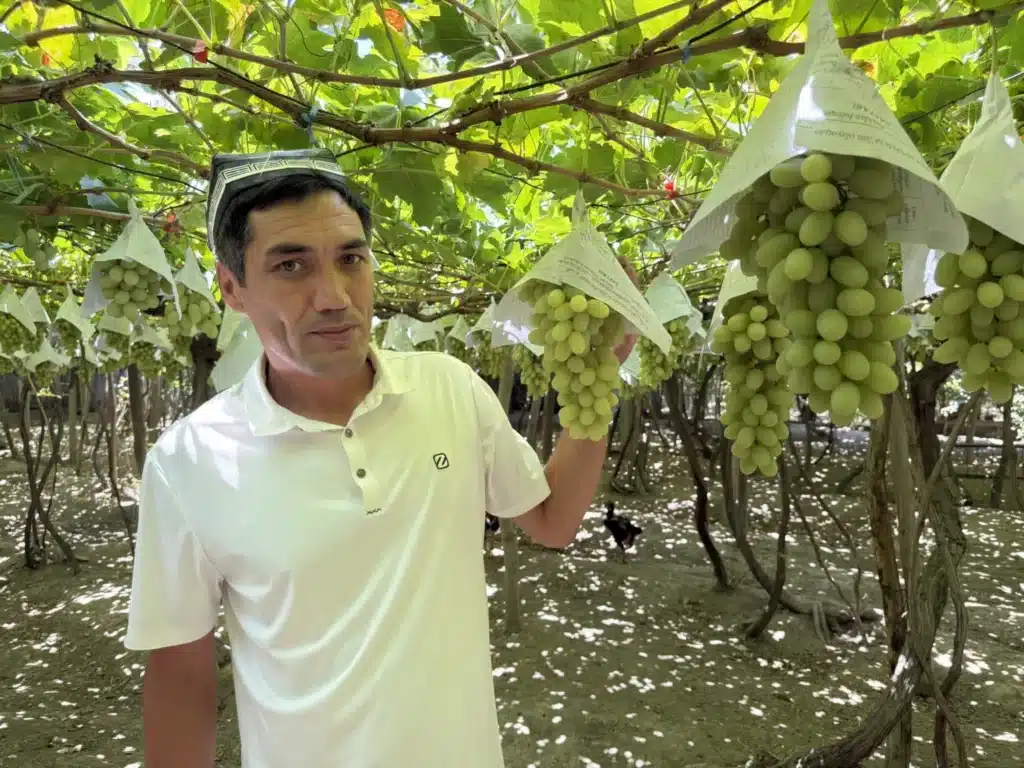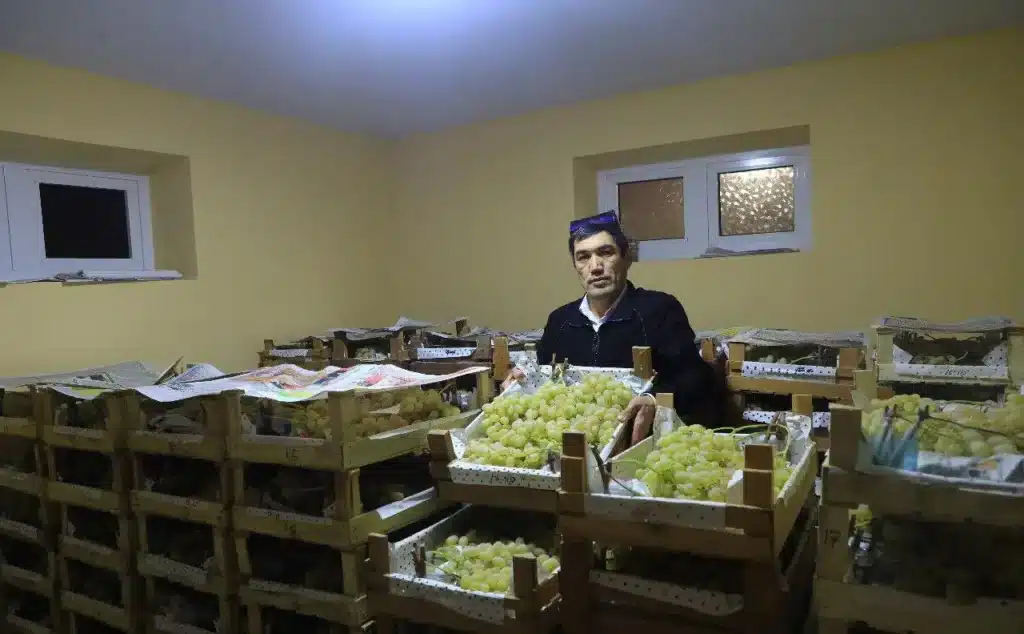From Vine to Venture: Altyaryk’s Grapes Fuel Agrotourism Boom

Altyaryk, a district in the fertile Fergana Valley near the ancient city of Kokand, is best known for its grape-growing heritage and unique local varieties.

With generations of expertise passed down through families, it has developed a distinctive viticulture school. Local farmers have bred dozens of grape varieties, including the famed Black Prince, Khusayni and Rizamat.
Almost every household in Altyaryk grows grapes. Farmers take pride in their harvests, constantly refining their cultivation and storage techniques to stay ahead in this deeply rooted tradition.
Thanks to this collective expertise, the district is often called Uzbekistan’s «table grape factory.» It is home to varieties that are grown nowhere else in the country.
In recent years, Altyaryk has also become a growing destination for culinary agrotourism. Visitors come to taste grapes straight off the vine and observe the cultivation process firsthand.
This article from Kursiv Uzbekistan explores Altyaryk’s leading grape farmer, its popular and emerging varieties, advanced storage techniques, export prospects and the sector’s major challenges.
From Orchard to Market: Altyaryk’s Grape Season
According to Umidjon Bozorov, director of Altyaryk Agrostar LLC, viticulture in Altyaryk dates back centuries.
«Our ancestors even took grape cuttings to Tajikistan, which helped develop viticulture there too,» he recalls.
Today, the district is home to 187 farmers cultivating nearly 3,000 hectares of vineyards. The main varieties grown are Khusayni, Rizamat and Kelinbarmoq.
In 2024, Altyaryk produced 63,500 tonnes of grapes, with around 60% exported. The main markets were Russia, Belarus and Kazakhstan.
A Farmer’s Vision in Reimagining Viticulture

Grape-growing is a family tradition in Altyaryk. One of its best-known farmers is 44-year-old Khusanboy Gofurov from the village of Chinortag. He has worked in vineyards since he was 12 and represents the fifth generation of grape farmers in his family.
«Grapes are a fruit of paradise. Every day, our entire family works together in the vineyard. For us, it’s not just a source of income — it’s part of our culture,» he says.
Khusanboy’s farm grows over 30 grape varieties, both local and foreign. Each vine reflects years of collective labour from his family. His children and father work alongside him, the latter sharing insights from over five decades of experience. They care for the vines, monitor watering and harvest the crops.
This year, Khusanboy earned a degree in agronomy from Tashkent State Agrarian University. He now wants to pass on his knowledge to younger generations and dreams of opening a Viticulture School in his district.
He believes practical training can empower youth to earn a living locally, helping develop small businesses and agrotourism — and crucially, keep young people in rural areas.
Popular Varieties and Global Trends
In Uzbekistan, Khusayni remains the most popular variety. However, seedless grapes are increasingly favoured on the global market. Farmers in Altyaryk have started to adapt, introducing varieties such as Sogdiana, Preobrazhenie, and a black seedless grape called Avatar, which can be stored until spring.
«Farmers are paying more attention to seedless grapes nowadays. But we’re still lagging behind,» says Khusanboy.
Importing seedlings from abroad is prohibited, so new varieties are developed in laboratories in the Jizzakh region.
«We’ve signed a supply agreement and now receive seedlings of these new varieties,» adds Bozorov.
Storage and Export
Khusanboy places particular emphasis on storing the harvest.
Grapes are picked in autumn and kept until May. He notes that while a kilo costs around 7,000 ($0.56) Uzbek soums during the season, the price can rise to 15,000–20,000 soums ($1.2-1.6) in winter.

Grapes are exported to Russia, Kazakhstan, Kyrgyzstan and Tajikistan. Proper storage allows the berries to retain their flavour and quality for months.
In 2024, Uzbekistan exported 219,200 tonnes of grapes worth $186.2 mln. The top buyers were:
- Russia: 174,900 tonnes
- Kazakhstan: 21,000 tonnes
- Kyrgyzstan: 15,400 tonnes
- Belarus: 6,900 tonnes
- Ukraine: 334 tonnes
Why Uzbekistan is Losing Ground in the Table Grape Market

Table grapes are the world’s second most consumed fruit after bananas, and global trade is growing by an average of 3.6% per year or about $336 mln annually. Yet Uzbekistan’s exports are declining, even in traditional markets.
Key reasons include:
- Outdated varieties. 71% of Uzbek vineyards still grow seeded grapes like Khusayni and Toifi, whereas markets in the US and Chile demand seedless types.
- Lack of technological progress. Uzbek grape clusters are often too large (around 1 kg), and there is little focus on innovation in breeding or modern storage.
- Information barriers. Import restrictions make it hard to introduce new varieties. Farmers stick to familiar grapes, while government support does not incentivise modernisation.
Turning Altyaryk into a Destination for Agrotourism

Altyaryk is now gaining recognition as a top agrotourism destination. Tourists from Japan, the UAE, France, India and beyond visit to sample grapes fresh off the vine and learn about cultivation and storage techniques.

Khusanboy notes that visitors are particularly surprised by how Altyaryk grapes harvested in October can stay fresh until summer.
«Many ask how we manage to keep them so long without losing taste. We show them our methods — how we store grapes in greenhouses and special containers,» he explains.
He fondly recalls one encounter with tourists from India:
«They tasted our grapes and exclaimed, ‘Ooooh, what flavour!’ That was such a joy to hear. Moments like that keep us going.»
Khusanboy is now planning to open an agrotourism complex with hands-on workshops and a grape-growing school.
«I want visitors to leave not just with grapes, but with a piece of our culture,» he says.
He believes agrotourism can help preserve local traditions while promoting modern viticulture techniques to a wider audience.

